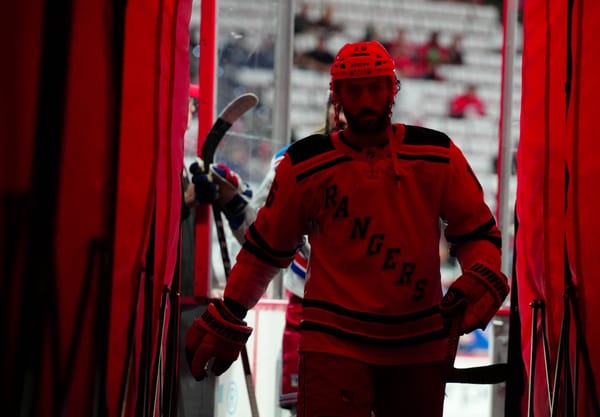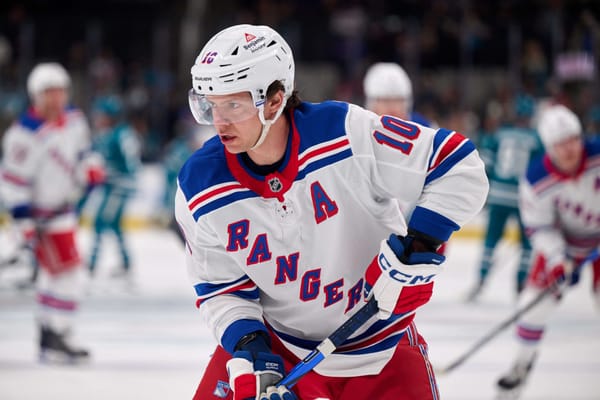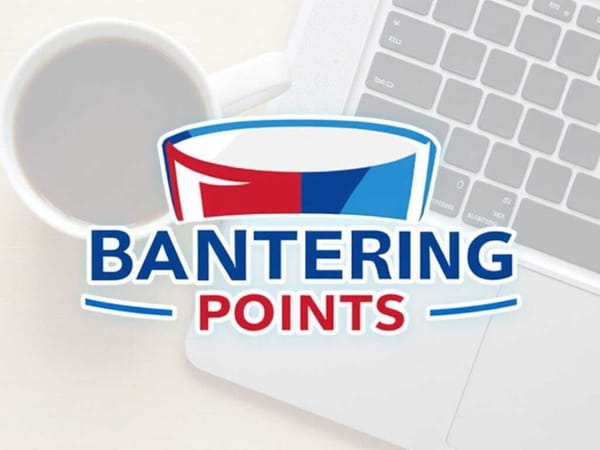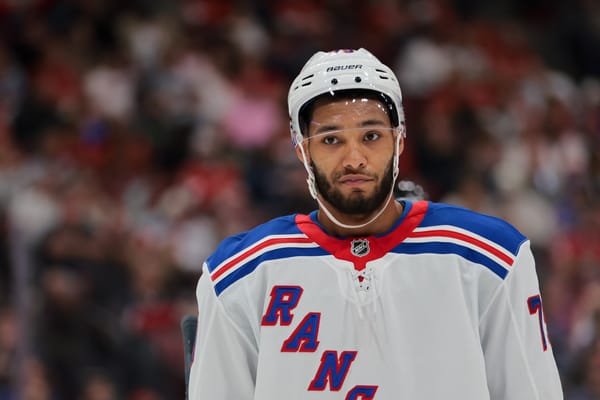Reload, Retool, or Rebuild? Part Two (What NYR Can Do)
What can the New York Rangers do to shake up this lineup?
This is the second half of my "Reload, Retool or Rebuild" story that ran earlier this week. If you haven't read that, you can catch up here.
"Which Path Are The Rangers Most Likely To Pursue?"
The upcoming "post-window" era will undoubtedly be defined by the front office's denial (or there lack of) of reality. If we see a front office write off 2015-16 as a team that was truly legitimate, but simply suffered some bad breaks and minor setbacks? Then the ensuing future of Broadway will surely be an abhorrent disaster. Selling more future assets for short-term roster upgrades, at a time when just the opposite is likely the best medicine, can only delay the next possible window of contention.
When faced with a situation-altering realization, in this case the Rangers' run of being a Cup threat most likely having run its course and come to an abrupt ending; there are various stages of reaction and reconciliation before accepting such and being able to move on accordingly. Individuals, companies, and yes, even NHL franchises, are not immune to this process. The first stages are shock and denial, something all of us can relate to when faced with imminent grief.
I wrote about my displeasure with the Eric Staal trade when it happened; his underwhelming impact on Broadway thereafter being totally irrelevant, if not validating. The real cause for my initial disapproval was that it represented something we'd all hoped General Manager Jeff Gorton would contrast greatly from his predecessor Sather: a misguided assessment of team needs.
Why would a team with a terrible penalty kill, woeful defense and downright awful enemy shot suppression spend their last cap dime on a forward?
If management was resigned to burn two 2nd round draft picks AND Aleksi Saarela, an impressive standout in the 2016 World Juniors tournament... why on earth would they go for a forward over a defenseman? Did the organization look at Dan Boyle, Dan Girardi & Marc Staal sitting in the top-six and say "well, there's certainly no room for improvement over those guys?" Apparently so, conveniently in-line with the mentality of the coaching staff, who dare not give Brady Skjei nor Dylan Mcilrath looks over the trio unless a logjam of injuries called for it. And lest we forget Keith Yandle's humbling ice time game after game so such titans of defense could continually be used with maximum frequency.
That's the biggest indictment to me, as far as where this team's front office (and coaching staff, for that matter) seem to have been mentally all season long: in denial.
I fear the franchise fully believes that 2017 remains an easily realistic Cup year for the Rangers, rationalizing 2015-16's shortcomings and myriad of red flags as nothing but variance, static, or downright bad luck, to an otherwise admirable plan. And that is a dangerous belief to harbor; no different than believing a ship taking on water remains plenty capable of reaching the predetermined, faraway destination as originally planned.
What happens to a standing structure when its foundation is outdated and rotted beyond repair? You go back to formula and begin intense remodeling of such foundation, so that down the road, a self-sustaining structure can one day stand again. The worst thing you could do? Justify its condition as some pesky imperfection, then spend precious time and resource adding a balcony or some gaudy second-floor renovation.
That's where we're probably at, whether the Rangers' front office knows it or not.
Sure, there's no doubt displeasure in the less-than-graceful playoff elimination to Pittsburgh, but is the organization aware of why it went down as it did? That's the important part.
On the wrong side of 30, the annual $11.2 million (15.7% of the cap) tied into Girardi & M. Staal will only deteriorate further. Even with the most optimistically impressive initial seasons, the combined $1.85 million cost-control of Skjei & Pavel Buchnevich will still not offset the team's overall bang-for-buck deficiency. The outgoing $4.5 million cap hit of Dan Boyle will open up some room, only to be quickly nullified by the incoming pay raises due to Kevin Hayes, Chris Kreider, J.T. Miller & McIlrath.
And of course, Lundqvist has played all the under-35 postseasons he's had to play. Everything and anything yet to come will be Lundqvist as one of the eldest netminders in the league. Even the greatest-of-their-era athletes eventually cave to gray hairs, slowing reflexes and reduced staminas. There is absolutely no sign of it as of now, not even with the 2016 postseason withstanding. Yet the King's inevitable decline can come at any point. And when it does, his $8.5 million cap hit (11.9% of the cap) will not amend.
So an ill-conceived reload is something I can see happening this summer, with only a harsher, swifter kick in the proverbial keister snapping this franchise back into reality on what the actual state of affairs truly is: a begging requiem for bigger amendments to this hockey club, more so than your routine oil change.
"Which Path Do YOU Think The Rangers Should Take?"
To me, it's either a major retool at best, or a minor rebuild at worst.
The biggest challenge is shedding the Girardi & Staal contracts, which is no easy feat. To trade either would require the player's permission (keeping in mind both have spent nearly a decade as a Ranger, growing roots in the area from rookies to family men in their respective tenures). Then, if that hurdle was cleared, the team would still have to find an interested trade partner. And then, the two teams would have to hash out an amicable deal, to which the destination for either needing to meet the defenseman's personal approval.
And keep in mind, a trade of one or both would almost certainly require the Rangers to maintain a serious chunk of salary, if not taking on a comparably bad contract in exchange. So even the most optimistic alignment of the stars probably won't let the Rangers off the hook unscathed in terms of salary cap capacity, unless an all-time unforeseen fleecing is in the cards.
Particularly with Girardi over Staal, utilizing the buyout window in June would seem to be the prevailingly realistic route to take. And buying out either or both certainly isn't ideal in terms of salary cap ramification... but sometimes it takes an ugly exit strategy to expedite an ugly obligation.
Here's the cap space savings per year if Dan Girardi and/or Marc Staal were to be bought out in June.#NYRpic.twitter.com/78hILnt1IM
— HockeyStatMiner (@HockeyStatMiner) March 27, 2016Then there's Rick Nash. He accounts for 11% of the current salary cap and has two years remaining on his deal. While he is tit-for-tat a much lesser overpayment than either Girardi or Staal, we must ask if his best value to the team going forward is what he could return in a trade this summer. While he's dismantled his postseason stigma the past calendar year (18 points in 24 playoff games), and 12 months ago was the oldest player to lead the NHL in even-strength goals since Phil Esposito; his inconsistent and injury-filled year will only deter potential shoppers of his steep cap hit. So once again, we see a trade route most likely requiring some retained salary on Broadway's end.
Compounding these issues, there's the trio of restricted free agents in Kevin Hayes, Miller and Kreider: all due sizable pay increases. While the group only accounted for an aggregated total salary cap hit of $4.249 million (6% of the cap) in 2015-16, we're looking at the same three bodies reaching anywhere from $8 million (11.2%) to $11 million (15.4%) in October. And no, lowballing won't be an economical weapon of defense for Gorton this time around, as all three have the option of salary arbitration.
And once again, there's Lundqvist's salary and age, forever under the microscope from here on out.
So taking all these factors into consideration, without knowing how the front office will deal (or not deal) with these issues, we're left to wonder: when is the next time the Rangers can truly be considered a competitive team, truly capable of winning 16 postseason games against the toughest of opposition?
For that answer to be 2017; as in, 12 short months from now?
We would be looking at not only the front office tackling the Girardi & Staal contracts, but alleviating them from the roster in the most best-case scenarios imaginable (think Gomez-for-McDonagh type reconstruction). Then, we'd be looking at a smart, home-run free agent signing or two (think Benoit Pouliot for $1.3 million in 2013, or Anton Stralman for $900,000 in 2012). Then, even still, we'd need Skjei and McIlrath to excel in their introductory seasons as Top-6 mainstays. Not to mention, Hayes and Kreider would likely have to produce serious, sharp improvement in 2016-17. And finally, Nash would have to put together another elite campaign at the age of 32, if not traded for asset(s) that would be equally vindicating.
Oh yes, and there wouldn't be much room at all for Lundqvist to regress. He would likely have to stave off any morsel of his inevitable decline one more year, fully and absolutely, for a surgically-remodeled 2017 team to have a shot at the Cup.
Most of, if not all, of these things coming together in one summer? A tall, tall order, for sure.
So once again, it is this blogger's opinion that the Rangers should execute an aggressive retool in a best-case scenario, with a multi-season rebuild not being the most outrageous suggestion, either.
Over the next few months, I'll be putting out parts two, three and four to this article. In each follow-up, we'll assume a different front office mindset (reload, retool, or rebuild) and investigate some hypothetical off-season routes to take in regards to reshaping the Rangers' roster. What might Gorton do should he be of the "reload" mindset? What about "retool?" And of course, what on earth would a summer "rebuild" look like?
And we haven't even gotten started on how current bench boss Alain Vigneault could or should factor into any of these hypotheticals, mind you.
There's a lot of potential scenarios to cover. Unfortunately, there's also a lot of time between now and October for Rangers fans to occupy their time and thoughts. Approximately 23 weeks until the next Rangers game, by my arithmetic.
Stay tuned.




